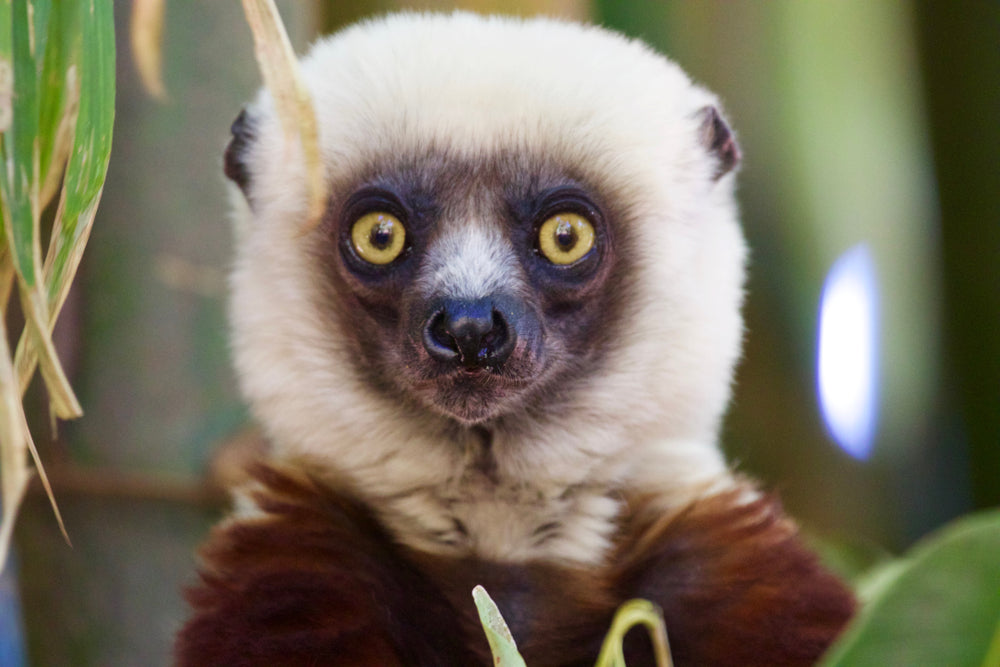Your Cart is Empty
To celebrate World Lemur Day, we’re taking a look at the wonderful (and slightly peculiar) primates of Madagascar.

© Shutterstock
One of the most famous species of lemur (thanks to King Julien!), ring-tailed lemurs live in groups of between six and 30 individuals, called troops, and are led by one dominant female. Their striking striped tails can grow up to 56 centimetres long and are used for balance and to communicate with one another. Unlike some other primates, ring-tailed lemurs are unable to grip with their tail. But although they can't use their tails to swing from branch to branch, they can use their friend's tail as a lively swing – just like these black-and-white ruffed lemurs:

© Wolfgang Kaehler/Alamy Stock Photo

© Shutterstock
Red ruffed lemurs can only be found living in tropical lowland forests in a small part of north-eastern Madagascar. Their long, rusty red, woolly fur coat keeps them warm, as their forest home can often be wet and is sometimes chilly. These fluffy charmers have six teeth packed close together, which are used like a comb to groom each other. Red ruffed lemurs also have the ability to communicate with another species, the black and white lemur – they can understand their alarm calls.

© Shutterstock
The indri is the largest species of lemur on the planet, and can grow as big as a human child! These arboreal primates spend the majority of their time in trees, foraging for food such as fruit, leaves, flowers and other forms of vegetation. Indri are part of the leaping lemur family, known as Indridae. Unlike their primate cousins, theindri has a very short tail – less than 5cm in length.

© Shutterstock
Sifakas got their unusual name as a result of their unique call, which sounds like “shif-auk”. They can be found living in small family groups of between three and 10 individuals, and it’s thought that only one female in every group breeds. Like many other species of lemur, these primates spend the majority of their time in trees. However, quite unusually, they remain upright at all times and use their powerful hind legs to jump between trees – they have the ability to clear distances of more than nine metres! Sifakas are famous for the two-legged sideways hops they do to move across the forest floor.

© Shutterstock
They may not look like lemurs, or any other animal for that matter, but aye-ayes are one of the rarest species of primate and are related to apes, chimpanzees and humans! They’re uniquely equipped with a long middle finger, which they use to tap on trees to encourage wood-boring insects to move. These clever primates use their large ears to listen for these movements before using their pointy clawed finger to fish out the grubs from under the bark. This type of hunting is known as echolocation.

© Minden Pictures/Alamy Stock Photo
World Lemur Day seeks to raise awareness of the value of these Madagascan primates in their natural habitats among scientists and the general public. Sadly, all of the species mentioned in this article are (at the time of posting) listed as endangered or critically endangered (the highest threat level) on the International Union for the Conservation of Nature’s Red List.
Comments will be approved before showing up.
In our ‘Clever Creatures’ March edition, we asked our readers to draw their dream pet and tell us about all the cool tricks they’d teach it. Thanks to everyone who sent us their entries – you totally rocked it. Your imagination, creativity and humour truly stole the show.
In our ‘Amazing Eyes’ February edition, we dared you to dream of having an extra pair of eyes… or maybe two! A massive thank you to everyone who joined in. Your entries were brilliantly inventive, wildly insightful, and absolutely captivating. Kudos to our four winners! Amelia, age 8, Livingston Ar...
In our January ‘Tree-Dwellers’ issue, we invited you to write a short story or poem. A hearty thank you to all who joined in. Your imaginative pieces were a joy to read. Kudos to our three winners: Annie, age 10, Malton Orangutan Natalia, age 10, Welford-on-Avon The iguana and the frog Joshua, a...



